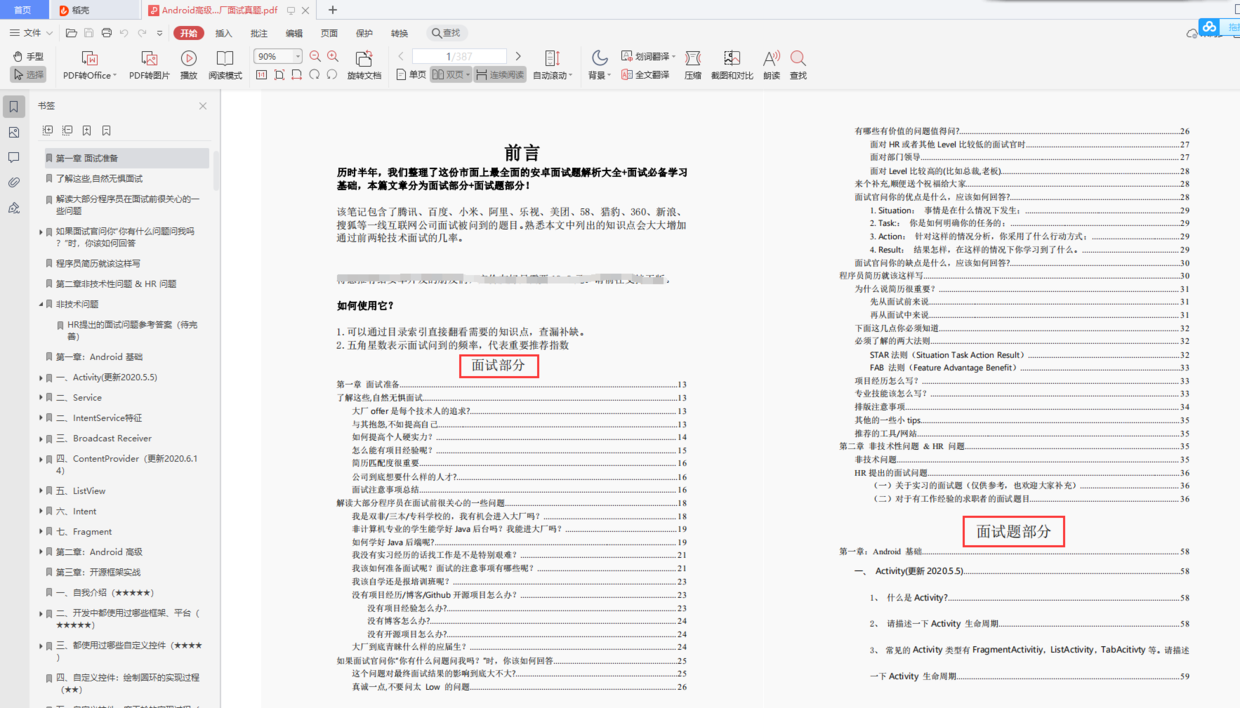Android SystemUI 源码分析与修改,并发编程挑战
实现过程如下:
1.首先在 SystemUI 中添加音量加减的资源文件,路径如下:
frameworks/base/packages/SystemUI/res/
将图片放入对应的 drawable 文件夹,包括音量+,和音量-,见上图。
2.修改导航栏的布局文件,路径:
frameworks/base/packages/SystemUI/res/
在对应的 layout 文件夹中找到 navigation_bar.xml 文件进行修改:
在返回键前面添加“音量减”,返回键的布局:
<com.android.systemui.statusbar.policy.KeyButtonView android:id="@+id/back"
android:layout_width="128dp" android:paddingStart="25dp" android:paddingEnd="25dp"
android:layout_height="match_parent"
android:src="@drawable/ic_sysbar_back"
systemui:keyCode="4"
android:layout_weight="0"
systemui:glowBackground="@drawable/ic_sysbar_highlight"
android:contentDescription="@string/accessibility_back"
/>
音量减的布局如下,这里先把 Visibility 定义为 Gone,然后在代码中控制是否显示:
<com.android.systemui.statusbar.policy.KeyButtonView android:id="@+id/sub"
android:src="@drawable/sub_normal"
android:layout_width="@dimen/navigation_key_width"
android:layout_height="match_parent"
android:layout_weight="0"
systemui:keyCode="302"
systemui:glowBackground="@drawable/ic_sysbar_highlight"
android:visibility="gone"/>
“音量加”添加到“最近应用”之后,最近应用的布局:
<com.android.systemui.statusbar.policy.KeyButtonView android:id="@+id/recent_apps"
android:layout_width="128dp" android:paddingStart="25dp" android:paddingEnd="25dp"
android:layout_height="match_parent"
android:src="@drawable/ic_sysbar_recent"
android:layout_weight="0"
systemui:glowBackground="@drawable/ic_sysbar_highlight"
android:contentDescription="@string/accessibility_recent"
/>
音量加的布局:
<com.android.systemui.statusbar.policy.KeyButtonView android:id="@+id/add"
android:src="@drawable/add_normal"
android:layout_width="@dimen/navigation_key_width"
android:layout_height="match_parent"
android:layout_weight="0"
systemui:keyCode="301"
systemui:glowBackground="@drawable/ic_sysbar_highlight"
android:visibility="gone"/>
3.接着修改代码逻辑,文件路径:
frameworks/base/packages/SystemUI/src/com/android/systemui/statusbar/phone/PhoneStatusBar.java
在 private void prepareNavigationBarView() {……}函数中添加显示音量加减的代码:
mNavigationBarView.getAddVolume().setVisibility(View.VISIBLE);
mNavigationBarView.getSubVolume()
《Android 学习笔记总结+最新移动架构视频+大厂安卓面试真题+项目实战源码讲义》
【docs.qq.com/doc/DSkNLaERkbnFoS0ZF】 完整内容开源分享
.setVisibility(View.VISIBLE);
对应的函数 getAddVolume()和 getAddVolume()要在
frameworks/base/packages/SystemUI/src/com/android/systemui/statusbar/phone/NavigationBarView.java
中实现:
public View getAddVolume(){
return mCurrentView.findViewById(R.id.add);
}
public View getSubVolume(){
return mCurrentView.findViewById(R.id.sub);
}
最后就是功能实现了,在
frameworks/base/packages/SystemUI/src/com/android/systemui/statusbar/phone/PhoneStatusBar.java
中添加监听函数:
private View.OnTouchListener mAddVolumeOnTouchListener = new View.OnTouchListener() {
public boolean onTouch(View v, MotionEvent ev) {
final int action = ev.getAction();
switch(action) {
case MotionEvent.ACTION_DOWN:
is_down = true;
Adjust_Volume(true);
maddHandler.postDelayed(maddRun, ADJUST_VOLUME_DELAY * 2);
break;
case MotionEvent.ACTION_MOVE:
is_down = true;
maddHandler.postDelayed(maddRun, ADJUST_VOLUME_DELAY * 2);
// maddHandler.removeCallbacks(maddRun);
break;
case MotionEvent.ACTION_UP:
is_down = false;
maddHandler.removeCallbacks(maddRun);
break;
}
return true;
}
};
private View.OnTouchListener mSubVolumeOnTouchListener = new View.OnTouchListener() {
public boolean onTouch(View v, MotionEvent ev) {
final int action = ev.getAction();
int x, y;
//int mCode = ev.getAction();
最后
我见过很多技术 leader 在面试的时候,遇到处于迷茫期的大龄程序员,比面试官年龄都大。这些人有一些共同特征:可能工作了 5、6 年,还是每天重复给业务部门写代码,工作内容的重复性比较高,没有什么技术含量的工作。问到这些人的职业规划时,他们也没有太多想法。
其实 30 岁到 40 岁是一个人职业发展的黄金阶段,一定要在业务范围内的扩张,技术广度和深度提升上有自己的计划,才有助于在职业发展上有持续的发展路径,而不至于停滞不前。
不断奔跑,你就知道学习的意义所在!














评论